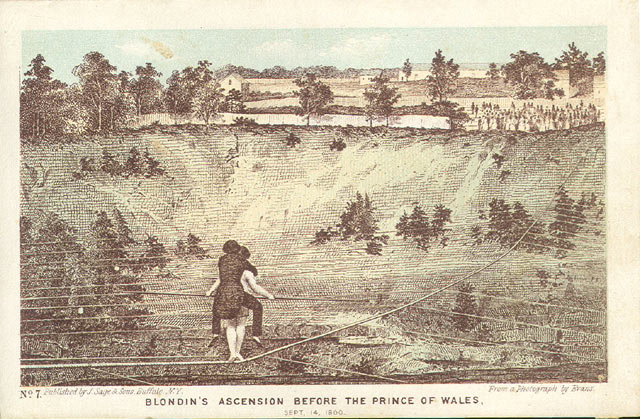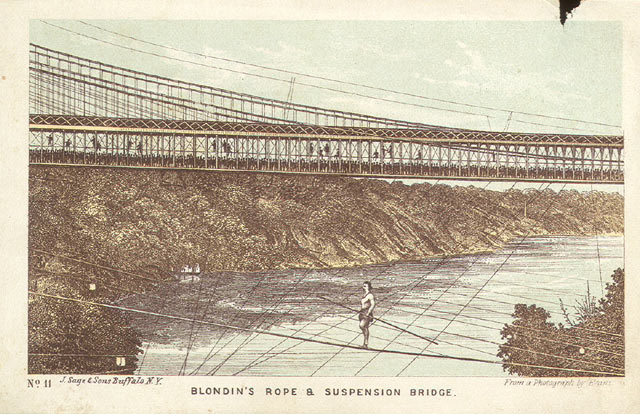| Two postcards featuring Charles Blondin: "unused circa 1910 J Sage & sons card Buffalo Evans photo J Sage card Buffalo Evans photo 1864 "It's hard to believe, but the guy lived past 70 and died in bed. This was after a lifetime of flabbergasting, nauseating feats including: * crossing Niagara Falls on a tightrope backward; * crossing Niagara Falls on a tightrope blindfolded; * crossing Niagara Falls on a tightrope at night; * crossing Niagara Falls on a tightrope on stilts; * crossing Niagara Falls on a tightrope with a passenger on his back; * dining at a table and chair balanced on a tightrope above Niagara Falls. 
As a little boy, Jean Francois Gravelet ("Charles Blondin,"
in adulthood) was mesmerized by a circus tightrope walker in his
hometown of Omer, France. He rigged a rope in his yard and began
practicing, encouraged by his father. A gymnast, the elder Gravelet
immediately sent the child to a gymnastics school in Lyons. He soon
emerged as "The Little Wonder" and began his performing
career. The year was 1829. The budding "Blondin" was 5. If
there ever was a doubt showmanship would become his vocation, it was
dispelled tragically four years later with the death of his father. He
had to support himself. His gift of balance, combined with a flair for
successful sensationalism, in time made him a very wealthy man. The Prince of Wales, unnerved by a Blondin crossing, instructed him
(futilely) to desist from such stunts forthwith. He had discovered his
means to lasting international fame. For a time he settled near the
falls with his wife and children. Even after he retired to England, he
couldn't refuse exhibition offers from both sides of the Atlantic. His
income during his heyday was almost half a million dollars annually.
Blondin died of diabetes at 73 in Ealing, near London." |
